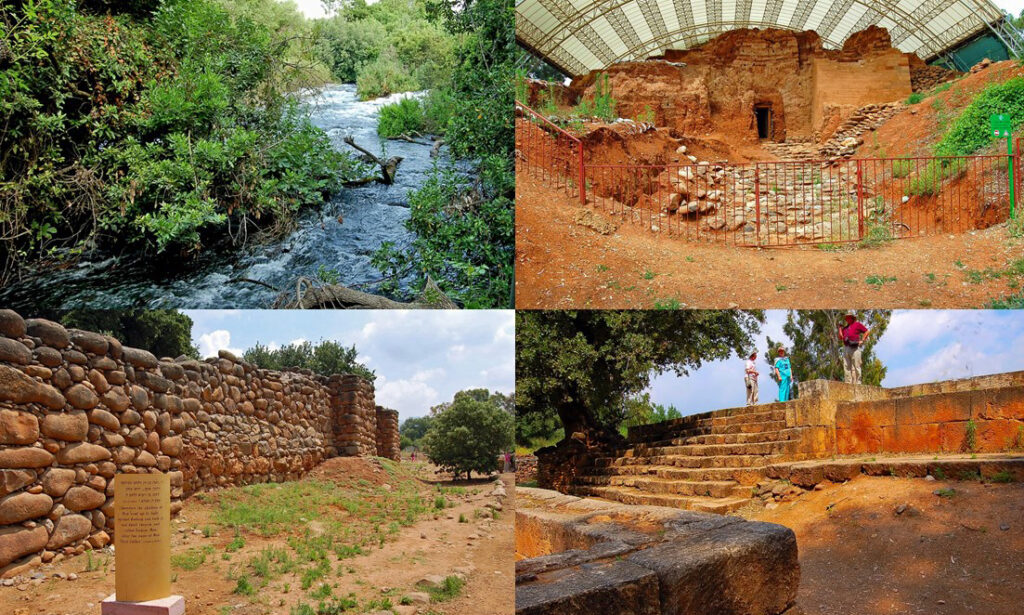Today, as we begin our trip through Israel and Palestine, we stop at one of the area’s most scenic and historically significant sites.
Tel Dan Nature Reserve is a 120-acre park, located in the far northeastern corner of Israel about 100 miles from Jerusalem. The Dan River, fed with runoff from Lebanon’s nearby Mount Hermon, runs through the park. Trails along the river, the most important source of the River Jordan, pass through lush forests, including 60-foot-tall ash trees. The park also includes Tel Dan, a large archeological mound that has produced many important archaeological discoveries. The oldest structure uncovered in Tel Dan is a mud brick gate from Laish, a city established by the Canaanites about 4000 years ago. The gate includes the oldest known arched opening, an invention once incorrectly attributed to the much later Romans. According to the Biblical Book of Joshua, members of the Israelite Tribe of Dan conquered Laish from the Canaanites. Archaeologists have unearthed stone gates and walls from the period of Israelite occupation of Dan, which formed the northern boundary of the United Monarchy established by King David. Visitors can also explore an excavated “high place” the Bible says King Jeroboam built when the northern Kingdom of Israel split from the southern Kingdom of Judah after the death of David’s son Solomon. Dan’s high place, originally featuring a golden calf, competed for worshippers with the Temple in Jerusalem.
During excavations at Tel Dan in 1993 and 1994, archaeologists discovered pieces of a broken stele (monument), probably erected by King Hazael of Aram-Damascus in the late ninth century B.C. Aramaic writing on the stele boasts of capturing Dan and killing Israel’s King Jehoram. Most scholars now believe the writing also says the king killed Ahaziah, “son of [a king] of the House of David,” the first non-Biblical evidence of David’s existence.

Comments are closed.